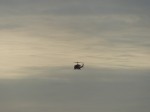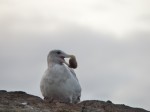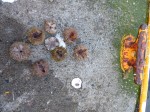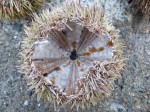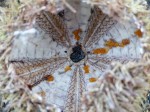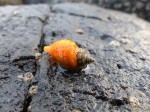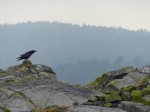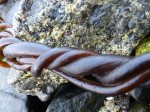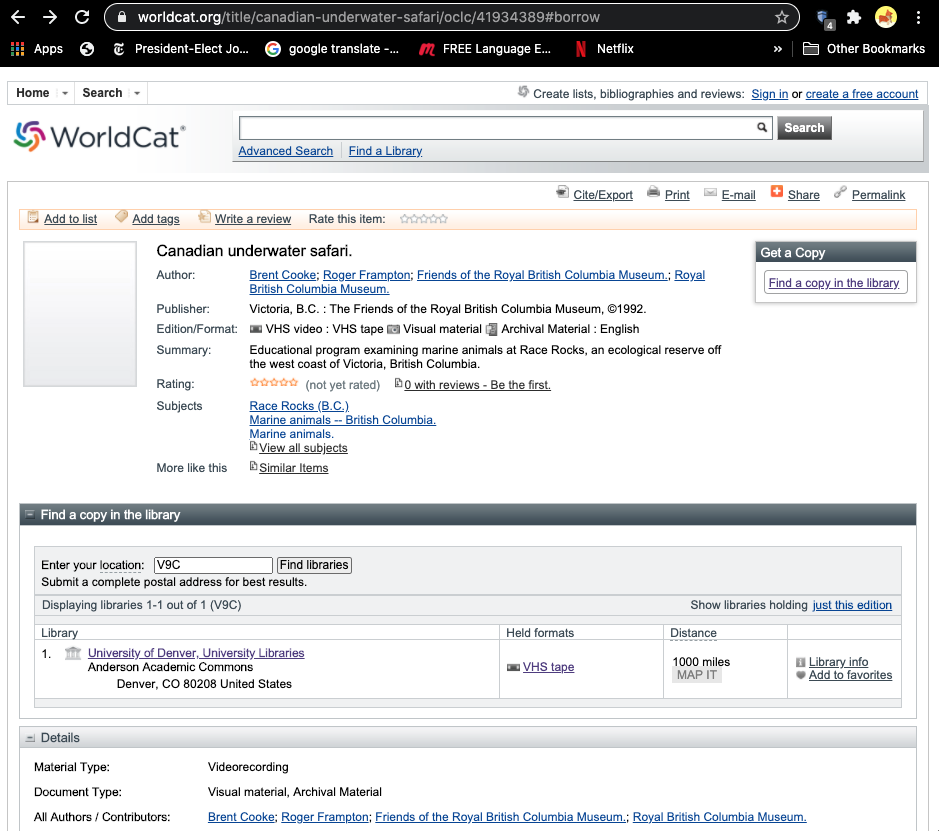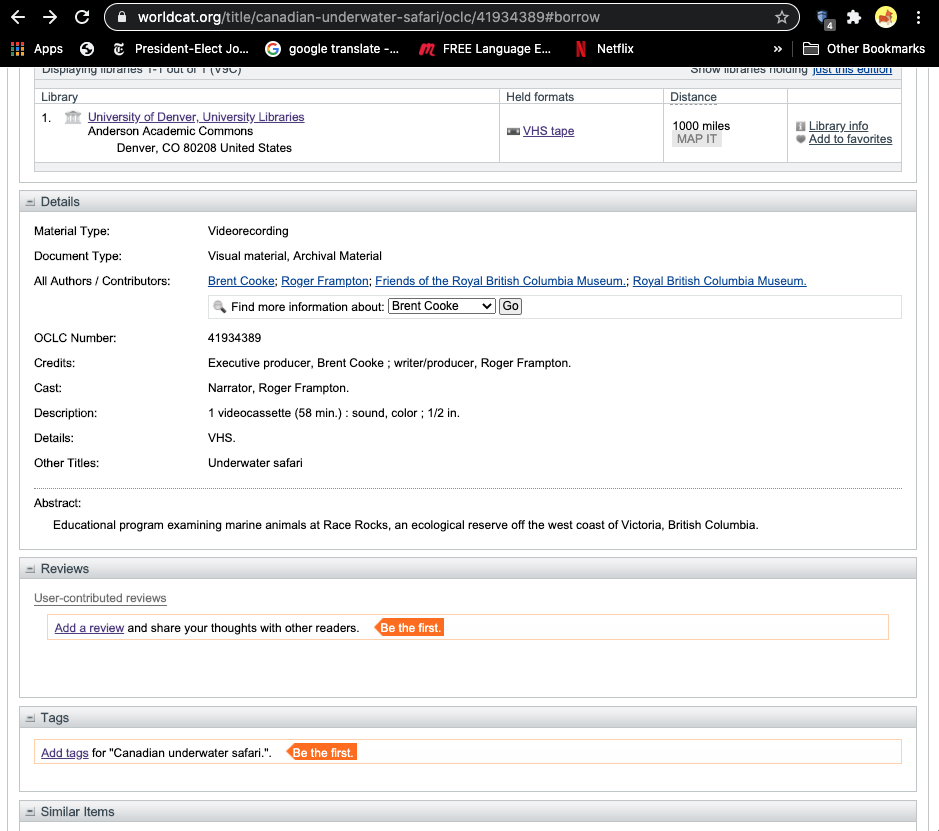Clear sky. Light winds.
My shift of nearly-perfect-weather continues.
I was almost finished my animal census (I just needed a couple picture of areas with lot’s of animals) when a Coast Guard helicopter did two circles of the tower. A lot of Gulls took flight the Sea lions on South Rocks took to the water. I guess I’ll try again tomorrow.
- Coast Guard helicopter coming in from the West
- Coast Guard helicopter circling the tower
The Gulls have been capitalizing on the low tides during daylight hours and have been foraging on green urchins. They leave the broken urchins on walkways, the jetty, and rock outcroppings. This time of year the urchins are full of roe (gonads) which, by Sea gull standards, is high is calories and nutrients.
Tafoni: The blocks of sandstone out a Race Rocks are leftover from building the tower stairs. There are a hand-full of rectangular blocks on the beach by the jetty. These blocks have the signature patterns of pits and holes that are cause by chemical erosion. Because the stone is permeable, saltwater infiltrates throughout the block. As the sun and wind dries the outer surfaces, the water moves outward, dissolving the clay that binds the sand particles together resulting in the surprisingly organized patterns of holes. Another driver is the physical weathering that occurs as salt dries and puts pressure on the rock particles forcing areas to exfoliate and flake. Although the science of tafoni isn’t fully understood, it is thought that there are also biological drivers, particularly in the intertidal region (Tafoni also occurs in deserts, no urchins there). Univavles and Urchins can chemically dissolve and abrade the the surface of the stone and hasten the dissolution of the pits.
- Gull with a Green Urchin
- Broken Green Urchins on the end of the boat ramp
- Green Urchin (Strongylocentrotus droebachiensis)
- The orange bits are the roe (eggs)
- Erosion on sandstone –called ‘tafone’
- Whelk: Nucella sp?
- Raven
- Kelp stipes
-Worked on DFO boat count report
-grease gun scavenger hunt
-washed solar panels
-ran firepump and wiped it down with fluid film

